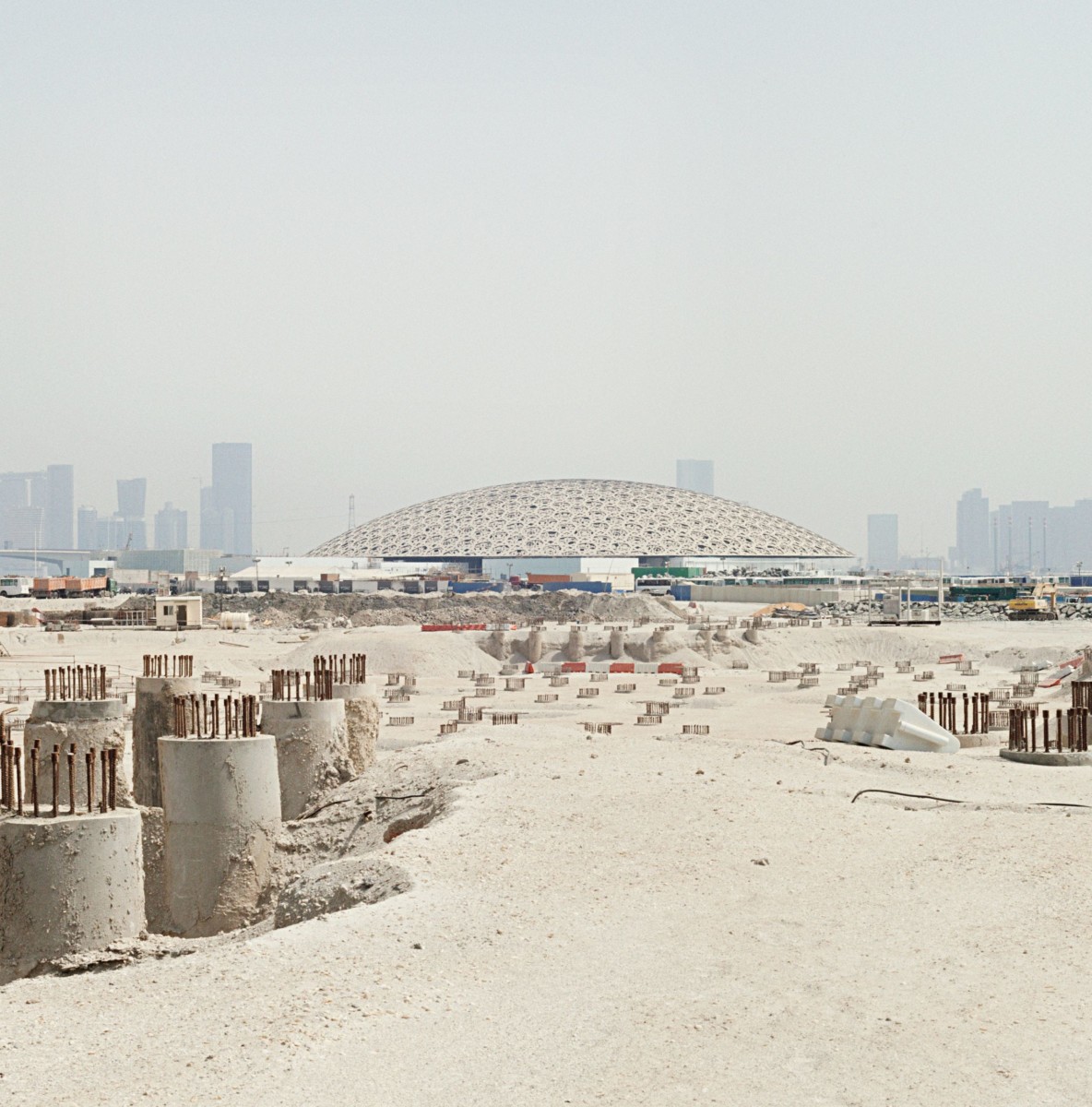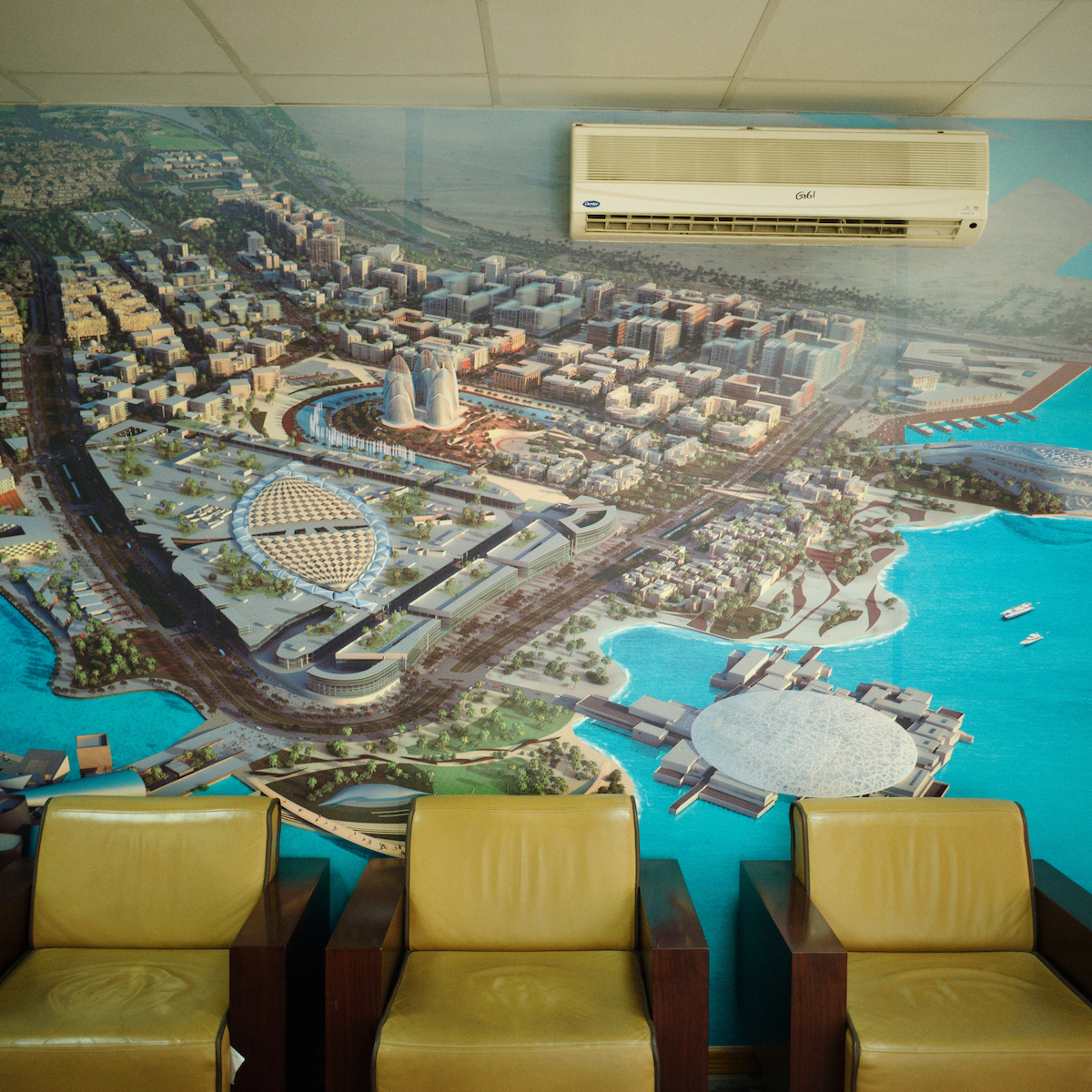
Editor's note: edited title May 26, 2017.
In June of this year, a Pakistani man fell to his death on Abu Dhabi's Saadiyat, or "Happiness" Island, a smear of man-made land roughly half the size of Bermuda.
The twenty-eight-year-old had been installing a piece of the seven-thousand-ton lattice dome of the future Louvre Abu Dhabi, one of several high-profile museums—the world's largest Guggenheim among them—to open there in the next few years. But he was not alone; millions of foreigners continue to work in the Gulf under a decades-old system called kafala, or sponsorship. Upon arrival, their passports are confiscated and they are housed in squalid desert barracks. Pay is abominably low and working conditions are often sub-human.
In this project, journalist Negar Azimi and photographer Knut Egil Wang explore the specific ecology of labor practices in the Gulf, with a focus on surreal Saadiyat Island.
Azimi looks at Gulf Labor, a five-year-old movement of artists that has worked to bring attention to conditions there. She also travels to southern India to begin to understand the factors motivating those who travel to the Gulf for work in the first place.
Finally, both the museums-to-be and the "starchitects" behind Saadiyat's future museums—Frank Gehry, Jean Nouvel and Norman Foster—represent the final piece of this story. Thanks in large part to the lucrative contracts involved, they have been all but silent about the abuses in their midst.







